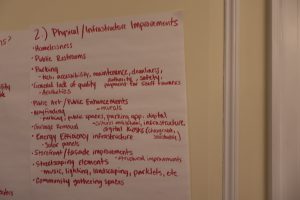Hits: 154

WPCNR WESTCHESTER LAW JOURNAL. By John F. Bailey. June 6, 2024:
The Westchester League of Women Voters District Attorney Forum held on zoom Tuesday was described in the words of civil rights lawyer William Wagstaff, candidate in his closing statement, when he described it as “A contrast and choice.”
You can view the complete Forum at
The choices are: Susan Cacase, retired judge with 30 years experience; Adeel Mirza a pro bono defense lawyer and former prosecutor in New Rochelle; and William Wagstaff, a civil rights lawyer.
Ms. Cacase said she has 30 years experience in the Westchester justice system, recently retired as a judge, she has a “passion” for protecting children, continuing to confront and diminish the opioid crisis, gun violence diminish fentanyl deaths, explore alternatives to incarceration and protect reproductive choice
The other two candidates in the June 25 primary are a seasoned prosecutor, Mr. Mirza formerly prosecutor with the City of New Rochelle and recently a pro bono defense lawyer; and William Wagstaff, a civil rights lawyer.
The contrast between the candidates being the veteran experience of judge and former prosecutor, Ms. Cacase and two persons, veteran litigators, familiar with the practices in Westchester courts where D.A. policies on decisions playout.
Mr. Mirza and Mr. Wagstaff feel there should be change in treatment of those charged in the Westchester justice system with emphasis on prosecution practices, more preventive community programs to influence positive behavior, more assistant D.A.s hired to speed prosecutions; less incarceration, and cutting back the alleged practice of delaying trials in domestic violence cases when divorce proceedings are going on simultaneously. The two court-seasoned opponents say the justice practices in Westchester need more programs in the communities, and working with the police, especially in the cities.
Here is a summary of positions and answers to the questions asked in the forum Tuesday night. Again you can see the candidates saying what I have truncated here in my notes at
Opening Statements:
MS CACACE: 30 Years experience. Passion for protecting children. Stopping gun violence. Addressing stopping sharp rise in opioid and fentanyl deaths, trafficking. Increase alternatives to incarceration, 100% endorsed by Pro Choice
- MIRZA: Address mental health factor in those committing crimes and intervention in paths that lead to crime: poverty and addiction, and crimes against tenants.
- WAGSTAFF: Has personal experience with crime. Father robbed at own gas station. Mother was also assaulted. Strong on expanding prosecution of hate crime violence. Action to intervene in mental health issues that can cut down on inevitable turn to crime.
3 MOST IMPORTANT HOT ISSUES IN COUNTY JUSTICE:
- CACASE: GUNS, GUN TRAFFICKING, OPIODS, SEX CRIMES
- MIRZA: GET GUNS OFF STREET, MORE GUN BUYBACKS
- WAGSTAFF: GUN VIOLENCE, DOMESTIC VIOLENCE, RELIEF FROM PROSECUTIONS LEADING TO INCARCERATION
INEQUALITY OF TREATMENT
- CACASE: ANALYZE CRIME STATS TO SEE HOW PEOPLE OF COLOR, HISPANICS ARE HELD TO SAME STANDARDS. CONCERNED ABOUT INCARCERATION PROPORTIONS BASED ON ETHNICITY. WOULD NOT NAMES, RACE, OF PERSONS CASES TO PUBLIC. WOULD RELEASE CRIME NUMBERS TO PUBLIC.
Mr. MIRZA: “I SAW IT EVER DAY”…MINORTY DEFENDENTS TALKED INTO GUILTY PLEAS TO GET OUT OF THE SYSTEM. ASSISTAN D.A.’S NEED MORE EXPLICIT INSTRUCTIONS. WE NEED STATS ABOUT HOW DIFFERENT RACES ARE TREATED WHAT IS BEING DONE. AT THE IVORY TOWER IN WHITE PLAINS (CITY COURTS), I SEE THIS HAPPEN.
- WAGSTAFF: I AM A CIVIL RIGHTS LAWYER. I HAVE BEEN THE RECIPIENT OF IT (INQUALITY OF TREATMENT).
GUN VIOLENCE
- CACASE: CONTROLLING GUN VIOLENCE REQUIRES COOPERATION WITH VARIOUS AGENCIES (STATE, LOCAL, FEDERAL), COORDINATING INVESTIGATIONS AND PROSECUTION. (FAMILIAR WITH HOW THESE INVESTIGATIONS WORK.)
- MIRZA: TOO MANY GUNS IN WESTCHESTER. I WOULD GO AFTER GUNS TRAFFICKING. PROVIDE MORE “GUN BUYBACKS.” REVISIT THOSE (PEOPLE, INSTITUTIONS) WHO SHOULD HAVE HELPED YOU (TO SEE HOW TREATMENTS AWARENESS COULD BE IMPROVED)
- WAGSTAFF: INVESTIGATE THINGS THAT TARGET BEHAVIOR IN COMMUNITIES. ESTABLISH MORE JOBS. MODEL HOW TO BE A CONTRIBUTOR TO THE COMMUNITY
RELEASE OF PRISONERS (BAIL)
- CACASE: EARLIER RELEASE DEPENDS ON THE CRIME. SEX OFFENDERS NEED MORE TIME THAN ANY OTHER CONVICTED OFFENDER. (MOST RECIDIVIST)
- MIRZA: SHORTENED SENTENCES SHOULD ONLY APPLY TO NON-VIOLENT CONVICTIONS. VICTIMS OF THE CRIME MUST AGREE TO A SHORTENED SENTENCE.
- WAGSTAFF: AGREES TO LIMIT SENTENCES . ADVOCATES FOR IT.
SEX CRIMES:
- CACASE: I WILL WORK TO HIRE MORE PROSECUTORS
- MIRZA: PROSECUTORS NEED HELP. THERE ARE NOT ENOUGH PEOPLE TO INVESTIGATE ALL THE SEX CASES
- WAGSTAFF: I WILL WORK TO REDUCE PROSECUTING DELAYS BROUGHT BY TWO PARTIES BECAUSE THEY ARE GOING THROUGH A DIVORCE AND ASK FOR DELAYS (IN GOING TO COURT) TO LEVERAGE DIVORCE NEGOTIATIONS
FINAL STATEMENTS (From Transcripts):
- CACASE:
I referenced earlier I’ve spent my life my career pursuing criminal justice as a judge of 19 years a criminal court judge of 19 years an assistant district attorney in the office office that I seek to lead for 15 years and a criminal defense attorney all here in Westchester County my experience combined actually is more than both of my opponents put together.
The position of district attorney is the chief law enforcement officer of the county it’s an important position it’s not one for someone to learn on the job figure it out once they get in there my Triad of experience makes me the most qualified for the position.
I’ve worked with the office in the office I’ve worked with law enforcement across the county. I have the respect of law enforcement I commit to work with law enforcement as the chief law enforcement officer of the county my commitment will be to take guns off the streets tackle the opioid crisis in the county protect victims of crimes especially the most vulnerable children and the elderly and add more resources to the biased crimes unit in light of the uptick of biased crimes across the county I want to use my experience to make Westchester a safer place to live for everyone and with your support I can get there and get this job done
- MIRZA:
You know what the reality is Ms. Cacace is right the DA’s office is not a job you can learn on the Fly no way no how the ADAs (Assistant District Attorneys) who have been in that office some of them are fantastic Adas great trial lawyers and they’ve been there and they’ve dedicated their careers to Public Safety and they need someone who’s done their job someone who has stood in the trenches with them somebody who has handled the criminal courts of Westchester with them it’s not that they’re looking for, you know, someone to come in and save them because the system is not a complete and total disaster. Criminal justice in New York Works.
Does it need fixes of course it needs fixes. The reality is it’s not something you want to just toss out though because we have good ADAs, have good judges we have good investigators we have good police departments 42 of them some of the Westchester police departments are some of the best in the country and we are not going to just throw take a a flamethrower to the whole place because we need them and a combination of all of us will make Westchester a better place but what are the fixes we can make to the system right—
There’s some crimes that are over prosecuted and there’s some crimes that don’t get enough attention right 18 years as a prosecutor I’ve learned that there’s people that belong in jail and there’s people that don’t belong in jail because of mental illness addiction poverty so let’s focus the time efforts of the D.A.s who are there right now some of who are great lawyers right and let them — for morale for expediency– for time let them focus on the crimes against Community, crimes against Reproductive Rights crimes against tenants gun crimes shootings homicides and the office will be a better place.
- WAGSTAFF:
This primary is about contrast in choice if you think that the justice system and its current iteration is working fine then you have two candidates that have been a cog in the wheel of Injustice that you can vote for but if you’re looking for someone who is going to be that breath of fresh air who’s going to bring a unique perspective and has a different background somebody that is proven that they are a transformational leader if you look at the obstacles that I’ve overcome to get to this point now is not the time to bet against me and I submit to you that if we are going to be serious about safety it takes somebody that has a combination of Education experience and passion to get us to the place that we all deserve to be if you want to continue the rut of succession politics which is an indictment on our democracy then you can go that pathway but I don’t suggest it and I implore you that the next district attorney should not be somebody that is trying to package entitlement as experience or looking for their old job back but should be somebody that is a transformational leader that has proven that they can overcome obstacles and solve intractable problems because we’re trying to solve generational issues and it’s going to take a generational Talent William Wagstaff is that talent.










 enjoying the warmer weather as summer begins. My team and I have continued assisting our neighbors, advocating for the district in Congress, and spending time in our community.
enjoying the warmer weather as summer begins. My team and I have continued assisting our neighbors, advocating for the district in Congress, and spending time in our community. I was also grateful to be able to speak with so many of you this month as I was out in our community. I joined a memorial in Mamaroneck to commemorate the lives of members of our community who have lost their lives to the COVID-19 pandemic. As Americans continue to be infected and others live with the lingering effects of Long COVID, we must strengthen our healthcare system, fight for Medicare for All, and research the effects of COVID to save lives.
I was also grateful to be able to speak with so many of you this month as I was out in our community. I joined a memorial in Mamaroneck to commemorate the lives of members of our community who have lost their lives to the COVID-19 pandemic. As Americans continue to be infected and others live with the lingering effects of Long COVID, we must strengthen our healthcare system, fight for Medicare for All, and research the effects of COVID to save lives.



